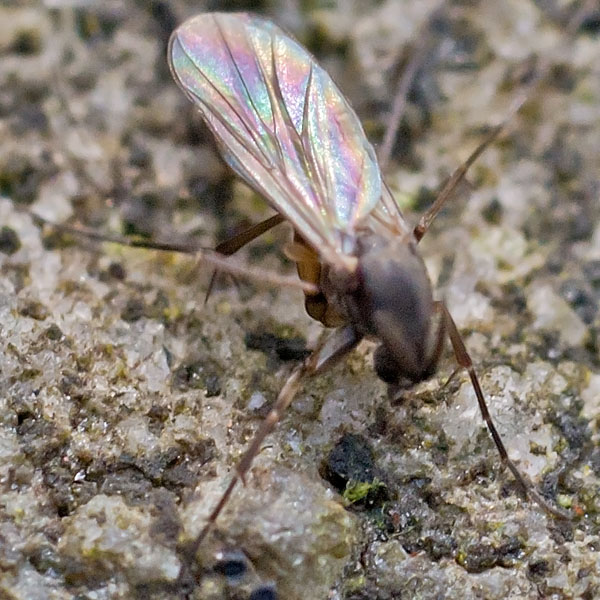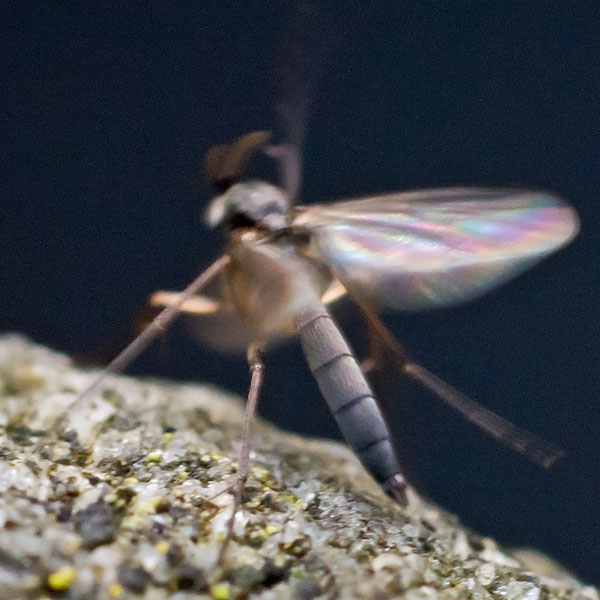Diptera.info :: Identification queries :: Diptera (adults)
Who is here? 1 guest(s)
|
Mycetophilidae > Cordyla sp.
|
|
| Stephen R |
Posted on 10-02-2011 15:32
|
|
Member Location: Clitheroe Lancashire UK Posts: 2396 Joined: 12.06.09 |
c.3.5mm Clitheroe UK 8 Feb 2011 Can you do anything from these photos? I think Janet's Cordyla sp. in the Gallery looks similar. Stephen R attached the following image:  [81.8Kb] Edited by Stephen R on 01-03-2011 10:42 |
|
|
|
| Stephen R |
Posted on 10-02-2011 15:33
|
|
Member Location: Clitheroe Lancashire UK Posts: 2396 Joined: 12.06.09 |
2
Stephen R attached the following image:  [135.4Kb] |
|
|
|
| Stephen R |
Posted on 10-02-2011 15:34
|
|
Member Location: Clitheroe Lancashire UK Posts: 2396 Joined: 12.06.09 |
3
Stephen R attached the following image:  [96.4Kb] |
|
|
|
| Paul Beuk |
Posted on 10-02-2011 15:34
|
|
Super Administrator Location: Netherlands Posts: 19403 Joined: 11.05.04 |
It is Cordyla: the combination of antennal shape and enlarged palps is characteristic.
Paul - - - - Paul Beuk on https://diptera.info |
| Stephen R |
Posted on 10-02-2011 15:36
|
|
Member Location: Clitheroe Lancashire UK Posts: 2396 Joined: 12.06.09 |
Thanks Paul  |
|
|
|
| oxycera |
Posted on 26-02-2011 17:15
|
|
Member Location: Barnsley, South Yorkshire Posts: 251 Joined: 31.12.09 |
So what are the critical features observable from these images? |
|
|
|
| Gnats2meetu |
Posted on 26-02-2011 17:55
|
|
Member Location: York, U.K. Posts: 290 Joined: 06.07.09 |
Pretty much what Paul said, Enlarged palpal segments and incomplete M2 vein. Costa does not go beyond R5 and distinctive colouration. The antennal segments counts 11 segments, judging from photo 1. C. brevicornis sp. has 10 in the male whereas the female has 9 as far as I remember. I'm open to correction of course :-) 
Bobby D Jorvík |
|
|
|
| oxycera |
Posted on 26-02-2011 18:16
|
|
Member Location: Barnsley, South Yorkshire Posts: 251 Joined: 31.12.09 |
Hi Rob, I'm just wondering if you had any inside info on pseudomurina, since I am not familiar any paper on this species. John |
|
|
|
| Stephen R |
Posted on 27-02-2011 21:23
|
|
Member Location: Clitheroe Lancashire UK Posts: 2396 Joined: 12.06.09 |
Thanks Rob, I'm impressed that you can determine the species from these duff photos - especially as it seems to be a newly described one. (I found one reference to 'Cordyla pseudomurina Kurina in press' on Google.) Stephen |
|
|
|
| Gnats2meetu |
Posted on 01-03-2011 10:26
|
|
Member Location: York, U.K. Posts: 290 Joined: 06.07.09 |
Hi Stephen, Just looking at it again, I can't be certain unless I see the genitalia. Oxycera is correct it would be a leap of faith! but its not C. crassicornis as M2 does not reach wing margin. Palpal segments are darkened so it is definitely not C.flaviceps, C.fasciata or C.parvipalpus that has yellowish brown palpal segments. The stem of M fork is more than 2.5 times as long as rm so it isn't C. fusca. I don't think it's nitidula as the CU fork base is slightly before the M fork. . C. semiflava males have 13 antennal flagellomeres whilst the females have 9. That leaves pusilla, murina, insons, fissa and pseudomurina. It gets a bit hazy after this in all honesty and making clearcut distinctions is based on visual which is inconsistent depending on lighting etc. I think Oxycera will agree, Apologies. 
Edited by Gnats2meetu on 01-03-2011 10:27 Bobby D Jorvík |
|
|
|
| Stephen R |
Posted on 01-03-2011 10:41
|
|
Member Location: Clitheroe Lancashire UK Posts: 2396 Joined: 12.06.09 |
Many thanks for giving this so much attention, Rob  As you can see from the photos, the fly wasn't hanging around to be caught, and I had no net. It's excellent to have it narrowed down to a group of species, and I'll look out for a specimen - though this is the only one I've got close to with the camera so far. As you can see from the photos, the fly wasn't hanging around to be caught, and I had no net. It's excellent to have it narrowed down to a group of species, and I'll look out for a specimen - though this is the only one I've got close to with the camera so far.Stephen. |
|
|
|
| Jump to Forum: |













